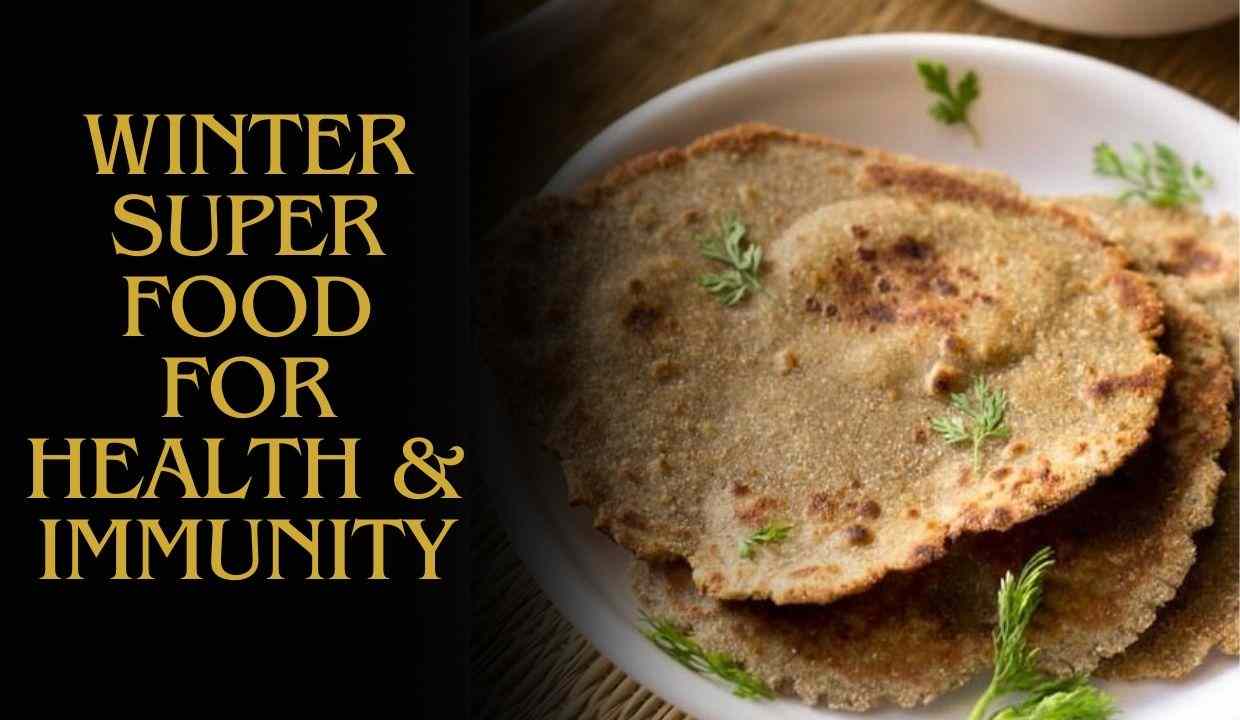Bajra: As soon as winter arrives, everything changes from our food to our clothes. In this season, people often include such things in their diet which protect them from winter and keep the body warm from inside. Bajra is one of these which provides many health benefits by including it in your winter diet.
Benefits of Bajra
The winter season has started with falling temperatures. With the changing seasons, our lifestyle starts changing rapidly. Winter also brings with it many changes in the weather. From food to lifestyle, everything changes in this season.

Especially to keep yourself healthy and strengthen your immunity, it is very important to make proper changes in the diet. In winter, people make many foods a part of their diet. Bajra is one of these, which is a major winter dish due to its countless benefits and excellent taste.
If you are still unaware of its benefits, then today we will tell you some such benefits of eating millet in winter, which will surprise even you.
1- Millet’s Digestive Benefits
- Enhances Winter Warmth: Millet consumption during winter aids in maintaining body warmth.
- Digestive Boost: Millet promotes improved digestion, fostering a healthy digestive system.
- Gluten-Free Advantage: Naturally gluten-free, millet is a suitable choice for those with gluten sensitivity, celiac disease, or intestinal issues.
- Ideal for Gluten-Sensitive Individuals: Millet’s gluten-free nature makes it a favorable option for individuals with gluten-related concerns.
- Seasonal Nutritional Support: Incorporating millet into winter diets not only provides warmth but also supports digestive wellness, especially for those with specific dietary needs.

2- Bajra’s Constipation Relief:
- Rich Fiber Source: Millets provide ample dietary fiber, aiding in digestion and relieving constipation.
- Sustained Fullness: The fiber content keeps the stomach full for extended periods, supporting weight management.
- Dual Benefit: Bajra’s fiber not only promotes digestive health but also contributes to a feeling of satiety, making it a valuable addition to your diet.
3- Enhancing Bone Health with Millet:
- Phosphorus Powerhouse: Millet is rich in phosphorus, a vital nutrient for robust bone health.
- Synergistic Support: Collaborating with calcium, phosphorus fortifies and maintains the strength of bones.
- Essential Nutrient: Incorporating millet into your diet ensures a natural and beneficial contribution to overall bone health.

4- Heart Health Boost with Millet:
- Mineral-Rich Goodness: Packed with fiber, magnesium, and iron, millet is a heart-healthy powerhouse.
- Winter Wellness Routine: Regular consumption in winter enhances heart health.
- Nutrient Support: The combination of minerals in millet contributes to the well-being of your heart, making it a valuable addition to your diet.
5- Immunity Reinforcement with Millet:
- Diverse Nutrient Arsenal: Millet houses a range of vitamins and minerals crucial for immune support.
- Winter Shield: Regular intake safeguards against common winter ailments, fortifying your immune system.
- Nutritional Armor: The varied nutrients in millet contribute to a robust immune response, promoting overall well-being.

6- Blood Sugar Control with Millet:
- Diabetic Support: Millet emerges as a boon for diabetic patients, offering valuable assistance.
- Fiber’s Influence: The inherent fiber content aids in regulating blood sugar levels effectively.
- Diabetes Management: Particularly beneficial for individuals with diabetes or those at risk, millet provides a proactive approach to blood sugar control.
Bajra is generally considered nutritious, it’s essential to note potential disadvantages:
- Antinutrients: Bajra contains antinutrients like phytic acid, which may hinder mineral absorption.
- Gluten-Free Challenges: While advantageous for some, the gluten-free nature can pose challenges in baking and food processing, affecting texture and elasticity.
- Digestive Sensitivity: In some cases, individuals may experience digestive discomfort due to the high fiber content in bajra.
- Oxalate Content: Bajra contains oxalates, which could contribute to kidney stone formation in susceptible individuals.
- Allergic Reactions: Although rare, some individuals may be allergic to millet, leading to allergic reactions.

Here are some frequently asked questions (FAQs) related to Bajra.
Q- Is bajra suitable for gluten-sensitive individuals?
A- Yes, bajra is naturally gluten-free, making it a suitable grain for those with gluten sensitivity or celiac disease.
Q- How can bajra be included in a balanced diet?
A- Bajra can be consumed in various forms, such as rotis, porridge, or as an ingredient in salads and soups, providing a nutritious addition to a balanced diet.
Q- Does bajra help in weight management?
A- Yes, the fiber content in bajra promotes a feeling of fullness, which can be beneficial for weight management by reducing overall calorie intake.
Q- Are there any precautions for individuals with digestive issues?
A- While bajra is rich in fiber, individuals with sensitive digestive systems may need to introduce it gradually to avoid potential discomfort. Adequate water intake is also essential.
Q- Can bajra be included in a diabetic-friendly diet?
A- Bajra’s fiber content may assist in controlling blood sugar levels, making it a potential inclusion in a diabetic-friendly diet. However, portion control and consultation with a healthcare professional are advisable.
Disclaimer: The information and recommendations provided in this article are intended for general informational purposes and should not be considered a substitute for professional medical advice. For personalized guidance regarding your specific health concerns, it is essential to consult with your healthcare professional.



